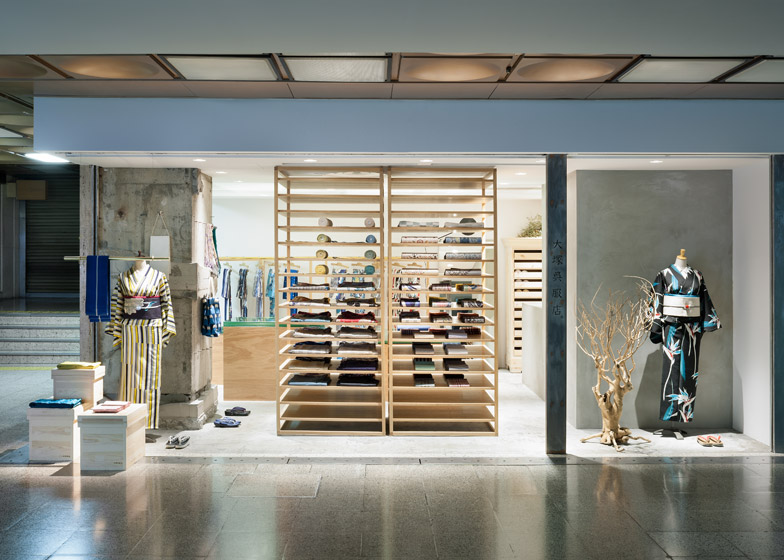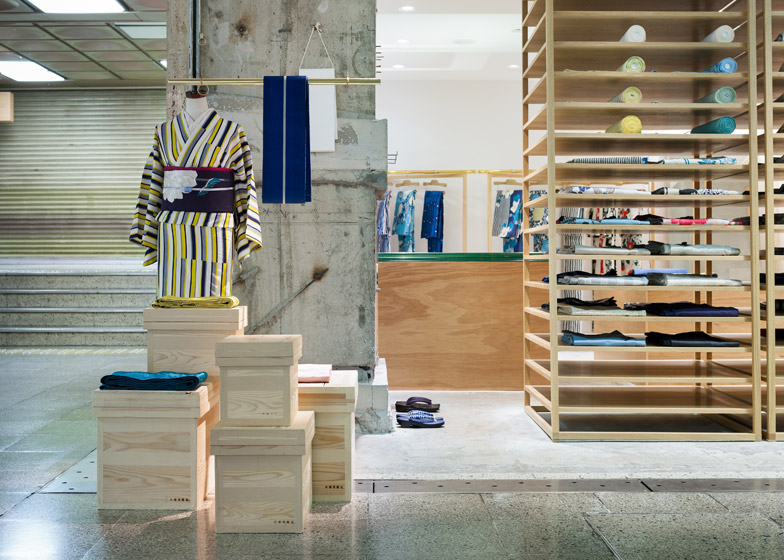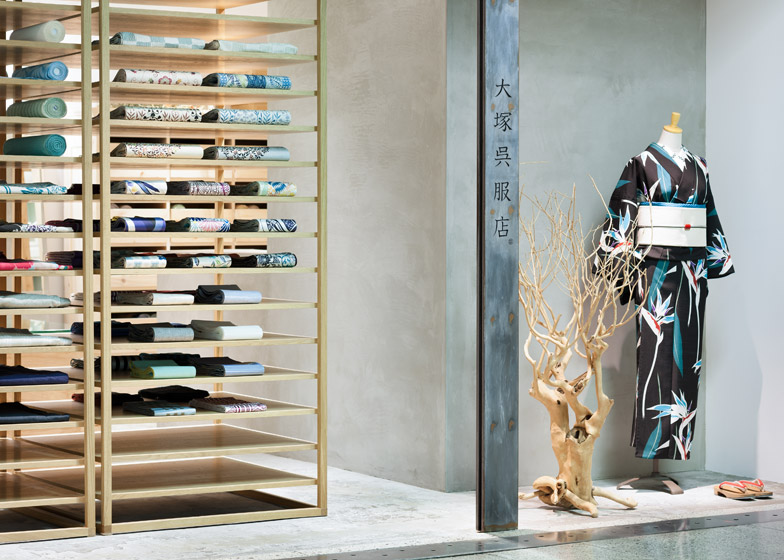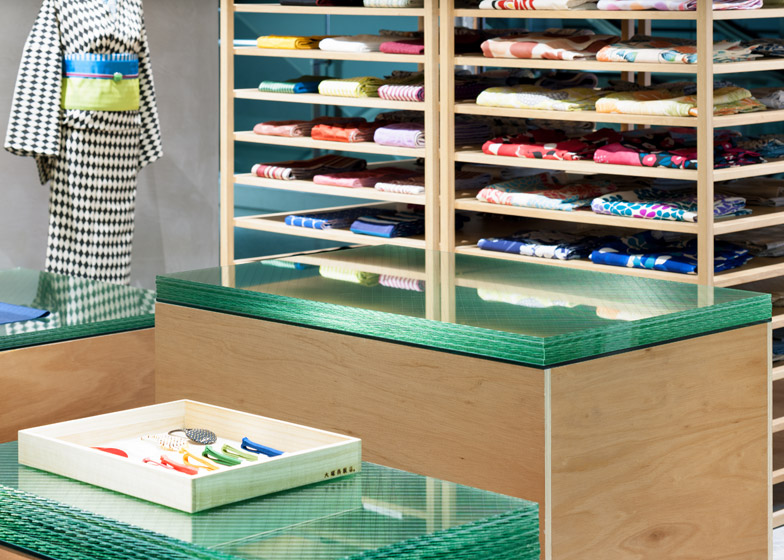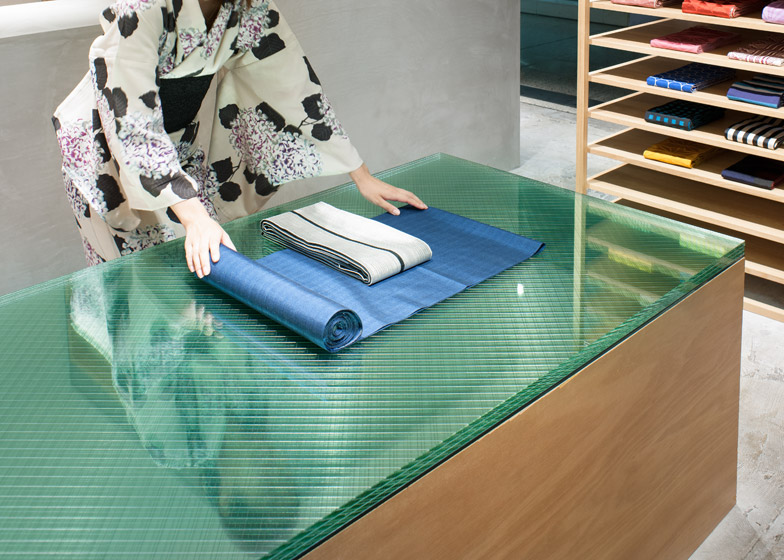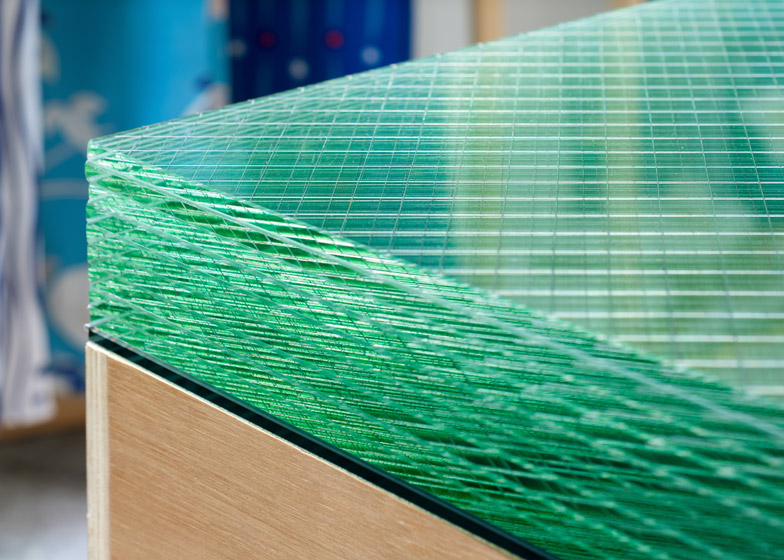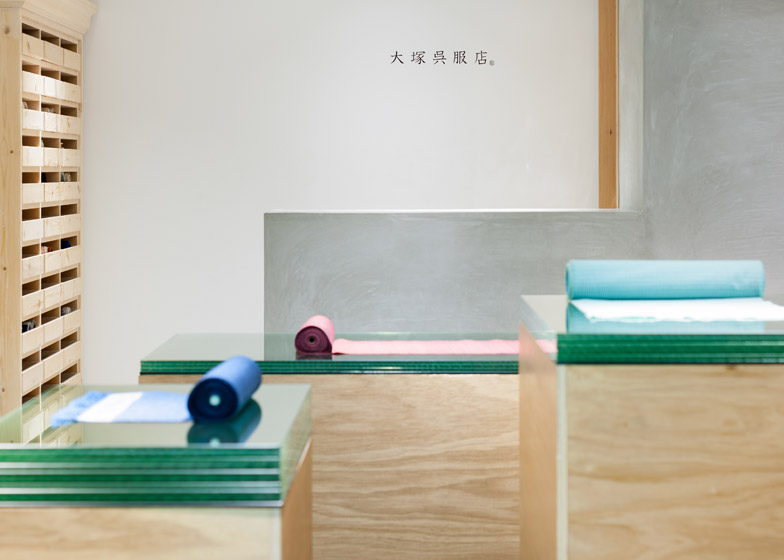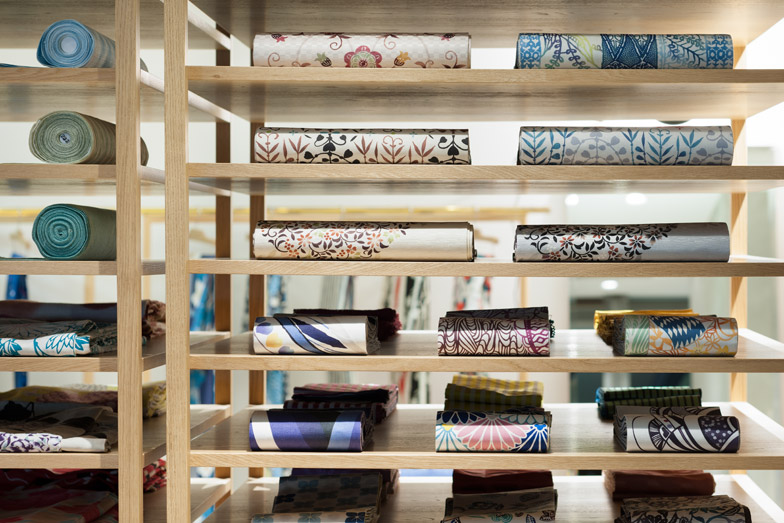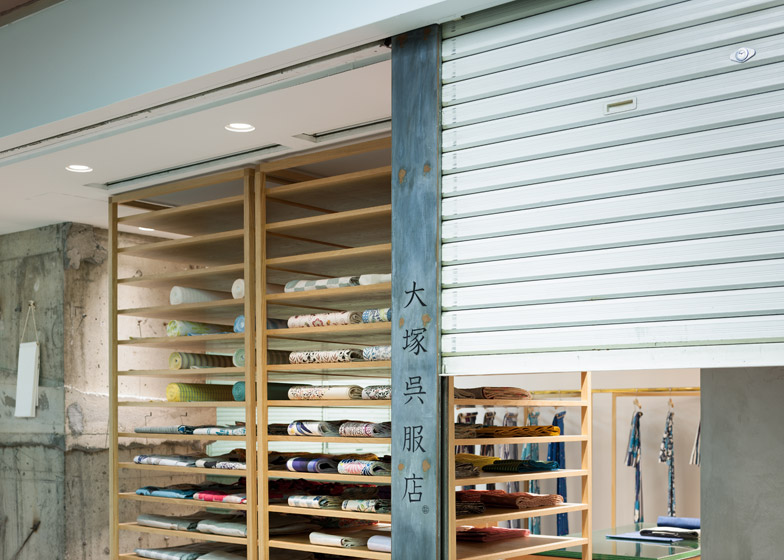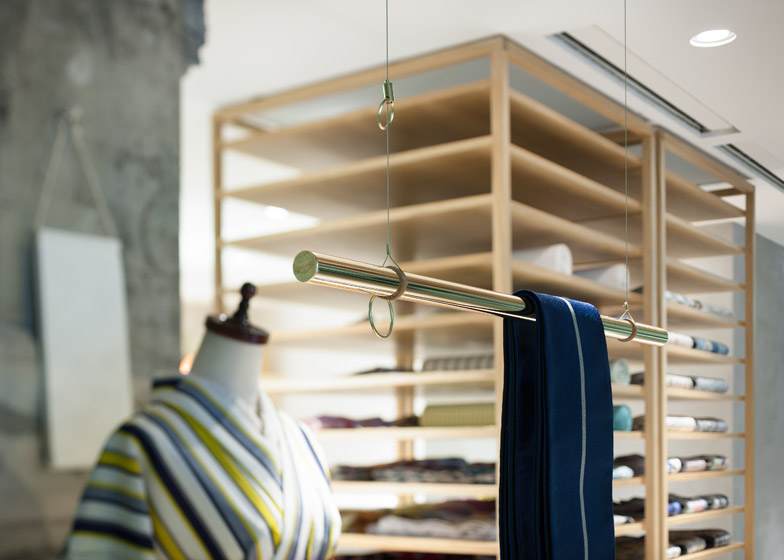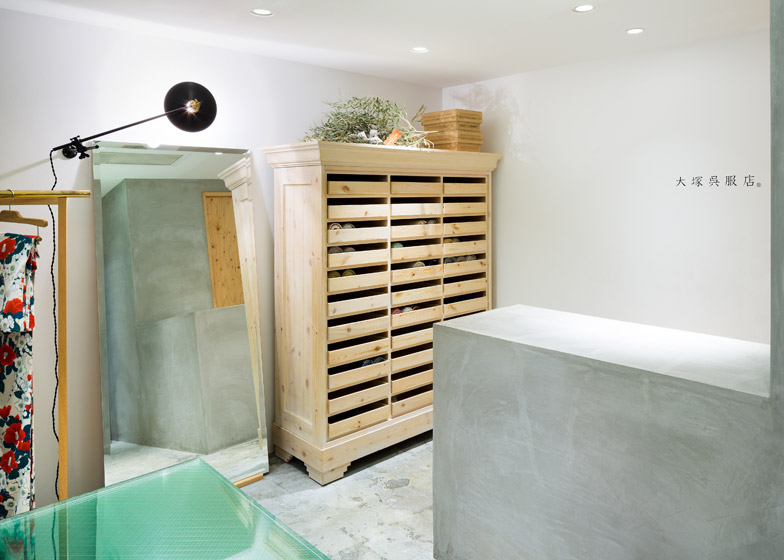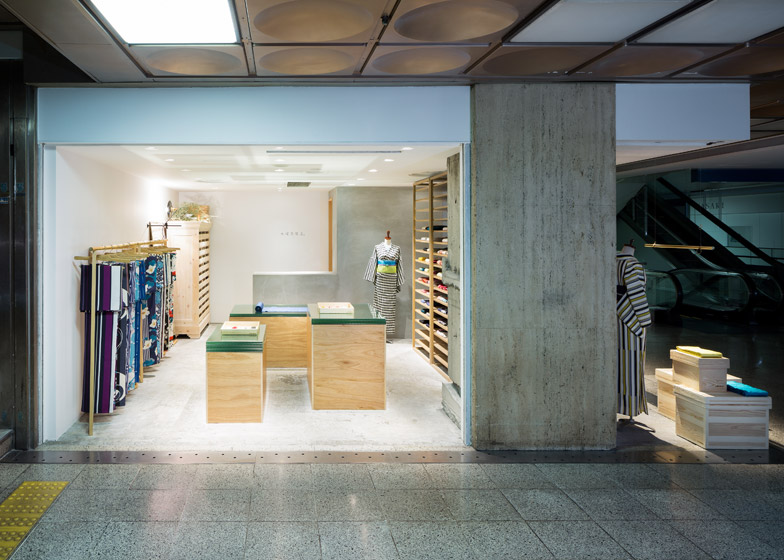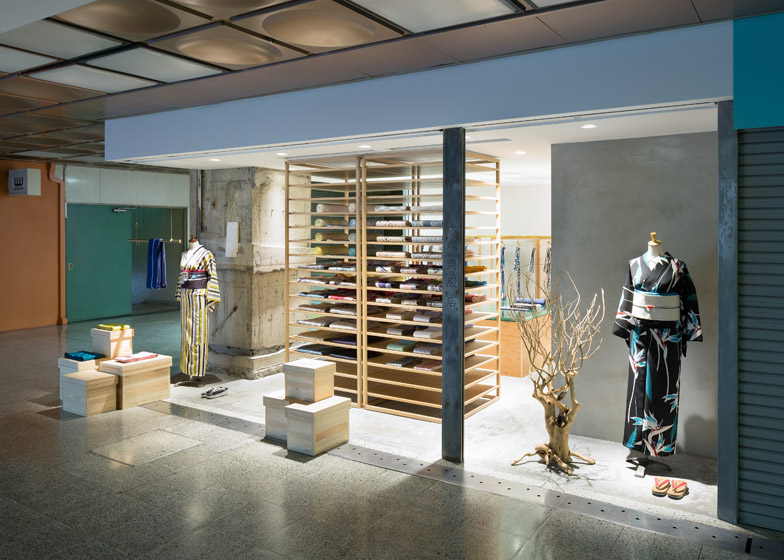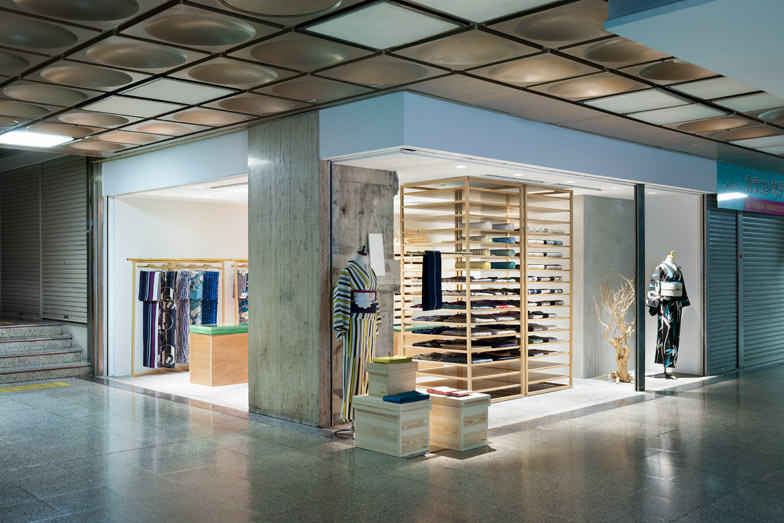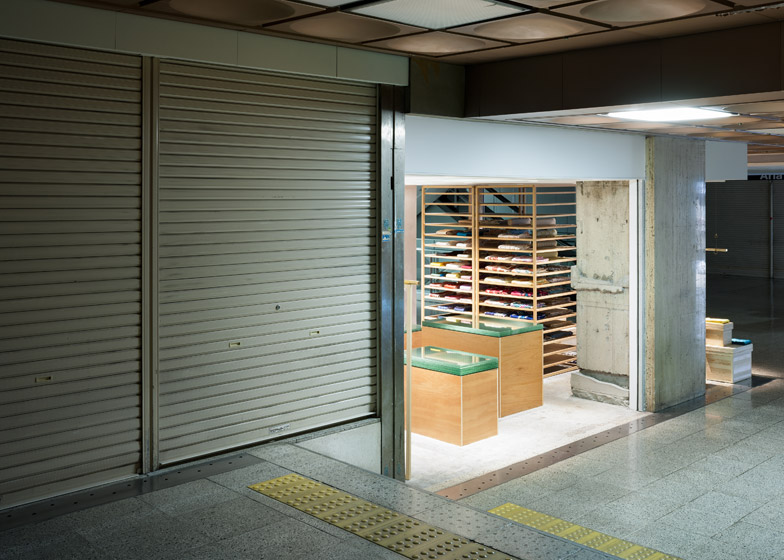Japanese designer Yusuke Seki has completed a second shop for modern kimono brand Otsuka Gofukuten, juxtaposing the garment with concrete surfaces and layers of green-tinged glass (+ slideshow).
Yusuke Seki first designed a shop in Kyoto for Otsuka Gofukuten – a clothing brand that takes its name from an alternative word for kimono.
This second store is located in a shopping centre in Kobe, western Japan.
The Tokyo-based designer wanted to create a contemporary aesthetic to help the brand reintroduce the traditional dress into everyday wear.
"Nowadays people tend to wear kimonos only on special occasions, but this store challenges this preconception by promoting the wearing of kimonos as part of a modern daily fashion routine," said the design team.
Lengths of fabric that make up the ornately decorated kimonos are displayed partially unrolled on top of wooden and glass plinths. Sheets of green, cross-hatched glass stacked on top of the islands are designed to reference the layers that make up the kimono.
"The coarse materials of the display unit are designed to contrast with the softness and sophistication of the clothing fabric," said the design team, who has also worked with Jaime Hayón on a Papabubble sweet shop in Yokohama.
The brand's stock is arranged by price-point, with items presented on three physical levels that represent cost. Lower cost items are displayed in wooden trays on low islands, while high-cost items are placed on the taller units.
Mid-price items are folded on two floor-to-ceiling shelving units between the main shop floor and a display area.
The wooden shelves form a partial screen between the shopping centre concourse and the store interior – an arrangement that has its roots in traditional Japanese shop design.
"It was inspired by a Japanese historical element of facade called Noren, a semi-indivisible fabric with a divided curtain," said the team.
A smooth concrete cash desk adjoins a fitting room to one side of the shelving, while on the other a roughly cast concrete column has been studded with pegs used to hang garments.
The two concrete surfaces create a backdrop for the shopfront display. When the shop opened this featured two mannequins, a set of small wooden blocks, and a short length of suspended tubular metal displaying a single bolt of fabric.
Shop signage is carved into one of the two metal supports that form a framework for the the shop shutters in front of this display area.
Photography is by Takumi Ota.

